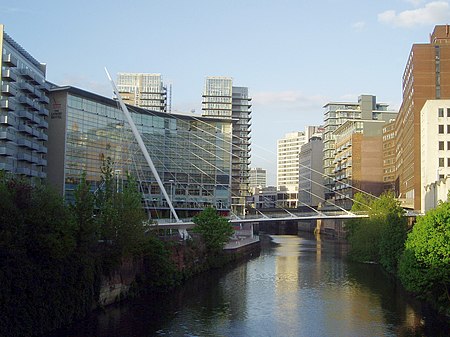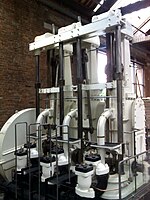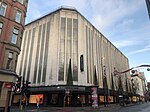Trinity Bridge, Greater Manchester
Bridges across the River IrwellBridges by Santiago CalatravaBridges completed in 1995Bridges in Greater ManchesterMulti-way bridges ... and 3 more
Neo-futurist architecturePedestrian bridges in EnglandUse British English from August 2017

Trinity Bridge is a three-way footbridge which crosses the River Irwell and links the two cities of Manchester and Salford in Greater Manchester, England. It was designed by renowned Spanish architect, Santiago Calatrava and was completed in 1995. It was one of Calatrava's earliest bridge works and remains the only project he has completed in the United Kingdom.
Excerpt from the Wikipedia article Trinity Bridge, Greater Manchester (License: CC BY-SA 3.0, Authors, Images).Trinity Bridge, Greater Manchester
Clermont-Ferrand Square, Salford City Centre
Geographical coordinates (GPS) Address External links Nearby Places Show on map
Geographical coordinates (GPS)
| Latitude | Longitude |
|---|---|
| N 53.4825 ° | E -2.2509 ° |
Address
Trinity Bridge
Clermont-Ferrand Square
M60 9AF Salford, City Centre
England, United Kingdom
Open on Google Maps











